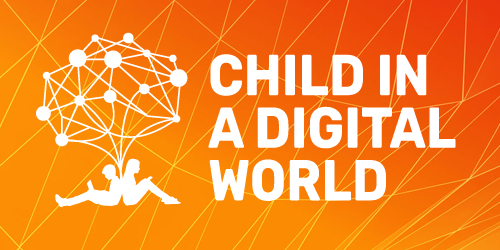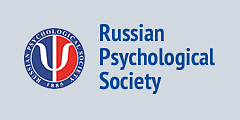
-
An Independent Evaluation of the Psychometric Properties of the Russian Version of the Pediatric Daytime Sleepiness Scale (PDSS)Zakharov, I.M.; Ismatullina, V.I.; Kolyasnikov, P.V.; Marakshina, Yu.A.; Malykh, A.S.; Tabueva, A.O.; Adamovich, T.V.; Lobaskova, M.M.; Malykh, S. B.PDF HTML3019“ CITE
Zakharov, I.M., Ismatullina, V.I., Kolyasnikov, P.V., Marakshina, J.A., Malykh, A.S., Tabueva, A.O., Adamovich, T.V., Lobaskova, M.M., Malykh, S.B. (2023). An Independent Evaluation of the Psychometric Properties of the Russian Version of the Pediatric Daytime Sleepiness Scale (PDSS). Psychology in Russia: State of the Art, 16(3), 206–221. DOI: 10.11621/pir.2023.0314
copied
-
Background. The quality of sleep significantly impacts children’s day-to-day performance, with at least 20% reporting issues with sleepiness. Valid tools for assessing the quality of sleep are needed.
Objective. In this study, we assessed the psychometric properties of the Russian version of the Pediatric Daytime Sleepiness Scale (PDSS). The initial adaptation of the PDSS was conducted on a sample from the Arctic regions of Russia. This location may have influenced the scale's generalizability due to variations in natural daylight across different areas of the country.
Design. To rectify this, we gathered a comprehensive, geographically diverse sample from Russia. This combined dataset comprised 3772 participants between 10 to 18 years of age, from nine different regions of Russia.
Results. We confirmed the unifactorial structure of the PDSS, which showed no regional effects. The psychometric analysis indicated that one item from the 8-item PDSS could be removed, thereby improving the scale's model fit. We also observed gender and age impacts on sleep quality: boys reported fewer sleep-related issues than girls, and younger children reported fewer problems than older children.
Conclusion. This study validates the usefulness and reliability of the Russian version of the PDSS, thereby enhancing its general applicability. Furthermore, we replicated previously reported age and sex effects on the sleep quality of school-aged children.
DOI: 10.11621/pir.2023.0314
Keywords: daytime sleepiness/ adolescents/ sleep-related problems/ sleep duration/ psychometric analysis
-
-
Cross-cultural Analysis of Models of the Relationship between the Cognitive Abilities and Academic Achievement in Primary School EducationPDF HTML4625“ CITE
Tikhomirova, T., Malykh, A., Lysenkova, I., Malykh, S. (2021). Cross-cultural Analysis of Models of the Relationship between the Cognitive Abilities and Academic Achievement in Primary School Education. Psychology in Russia: State of the Art, 14(4), 94-110. DOI: 10.11621/pir.2021.0407
copied
-
Background. The cognitive predictors of academic achievement are associated both with basic cognitive abilities such as the information processing speed, number sense and visuospatial working memory, as well as with general ability including nonverbal intelligence. However, the ratio between cognitive development and school achievement can depend on sociocultural conditions.
Objective. The results of a cross-cultural analysis of the relationship between cognitive development and academic achievement during primary education are presented. The analysis was conducted sampling schoolchildren from Russia and Kyrgyzstan, two countries that have a similar organization of the national education system but differ in the level of socioeconomic development.
Design. The study involved 732 schoolchildren aged 7.7 to 11.8 years studying in Russia and Kyrgyzstan. Information processing speed, visuospatial working memory, and number sense were assessed using each of “Choice Reaction Time,” “Corsi Block-Tapping Test,” and “Number Sense” computerized tests.
Results. According to the results, empirical data in both samples show that a model where in information processing speed signifies basic cognitive ability is a key predictor of nonverbal intelligence, working memory, and number sense, and each of these may contribute to individual differences in academic achievement. Notwithstanding the universality of this model, cross-cultural differences were seen to engender a reduction of schoolchildren’s academic achievements, given possible impacts of less favorable educational conditions.
Conclusion. In the relationship between cognitive abilities and academic success at the primary school education, there are both similarities and differences between schoolchildren studying in Russia and Kyrgyzstan.
DOI: 10.11621/pir.2021.0407
Keywords: Cross-cultural study/ information processing speed/ nonverbal intelligence/ visuospatial working memory/ number sense/ academic achievement/ primary school education/ structural equation modeling
-
-
Visuospatial Working Memory Development across Years of Schooling
-
Background. Visuospatial working memory changes across years of schooling. According to data from the cross-sectional and longitudinal studies available in the literature, conclusions about the linear or nonlinear nature of changes in visuospatial working memory depend on the period of time analyzed and the frequency of the measurements. However, which of the two nonlinear models of functional dependence (e.g., quadratic or cubic) best describes the developmental trajectories of visuospatial memory across schooling is still an open question.
Objective. The results of statistical analysis of the development of visuospatial working memory in girls and boys across school years from Grade 1 to Grade 11 are presented. Additionally, the relationship between age and years of schooling is investigated, as is the influence of these factors on the developmental trajectory of visuospatial working memory.
Design. This cross-sectional study involved 1,246 pupils who were in Grades 1 to 11 at one public school; their ages ranged from 6.8 to 19.1 years (50.4% were boys). The students’ visuospatial working memory was measured using the computerized “Sequences” test, which is based on the “Corsi block-tapping task” and has been adapted for Russian schoolchildren. Correlations, dispersion analysis, and polynomial regression were carried out, and both linear and nonlinear models of the functional dependence of working memory on years of schooling were tested.
Results. The results of the multiple regression analysis suggest that number of years of schooling is a more important factor than age with regard to temporal changes in visuospatial working memory. When we introduced “years of schooling” and “age” predictors into a single model, we found the year of schooling to be the most significant predictor of visuospatial working memory (β = 1.07;p = 0.000).While age remained a statistically significant predictor (β = -0.52;p = 0.008), it did not significantly improve the model characteristics (corrected R2 = 0.30; F(2) = 253.9; p<0.01).
The results of the polynomial regression showed that during schooling, the developmental trajectories of visuospatial working memory are nonlinear for both genders. In girls, both the quadratic and cubic models explained 36% of the variance in visuospatial working memory, but the quadratic model had the least number of parameters and the best fit to data. In boys, despite all theoretical models being suitable, the largest percentage of the variance in visuospatial working memory values was explained using the cubic model (R2= 0.31; p = 0.000). Thus, the characteristic of change in visuospatial working memory for girls had a quadratic relationship that stabilized after Grade 8, while for boys, the relationship was cubic, with the period of stabilization between Grades 5 and 6, and then further growth.
Conclusion. We concluded that the number of years of study is an important factor in the development of visuospatial working memory during the schooling period, but that there are other factors involved as well.
DOI: 10.11621/pir.2020.0414
Keywords: visuospatial working memory; school education; grade; age; cross-sectional study; polynomial regression; gender differences
-









